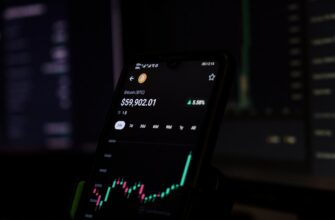- What Does “Crypto LP Locked” Mean and Why It Matters?
- Understanding Liquidity Provider (LP) Tokens
- How Crypto LP Locking Prevents Rug Pulls
- Step-by-Step: How to Verify Locked Liquidity
- Key Benefits of Locked LP Tokens
- Potential Risks and Limitations
- FAQs: Crypto LP Locked Explained
- Conclusion: Locked Liquidity as DeFi’s Trust Anchor
What Does “Crypto LP Locked” Mean and Why It Matters?
In decentralized finance (DeFi), “crypto LP locked” refers to the practice of securing liquidity provider (LP) tokens in a smart contract for a predetermined period. This mechanism prevents developers or token creators from abruptly withdrawing pooled funds – a common tactic in “rug pull” scams. When LP tokens are locked, it signals project legitimacy and creates a trust layer for investors by ensuring liquidity remains available for trading. As rug pulls drained over $2.8 billion from investors in 2021 alone (Chainalysis data), locked liquidity has become a critical security benchmark in crypto.
Understanding Liquidity Provider (LP) Tokens
LP tokens are digital certificates representing your contribution to a decentralized exchange’s liquidity pool. When you add cryptocurrency pairs (e.g., ETH/USDC) to platforms like Uniswap or PancakeSwap, you receive LP tokens proportional to your stake. These tokens:
- Entitle you to a share of trading fees from the pool
- Can often be staked for additional yield
- Must be burned to reclaim your original assets
Without locking mechanisms, developers holding LP tokens could drain the entire pool instantly, collapsing the token’s value.
How Crypto LP Locking Prevents Rug Pulls
Rug pulls occur when malicious creators remove all liquidity, causing token prices to crash. LP locking combats this through:
- Time-Locked Contracts: LP tokens are frozen in audited smart contracts for set periods (e.g., 1-5 years)
- Multi-Sig Requirements: Withdrawals require multiple authorized signatures
- Transparency: Locked contracts are publicly verifiable on blockchain explorers
Projects like Unicrypt and Team Finance pioneered this security standard, with over $10 billion in liquidity currently locked across DeFi platforms.
Step-by-Step: How to Verify Locked Liquidity
Always confirm LP locks before investing:
- Find the token’s liquidity pool address via DeFi platforms (e.g., DexScreener)
- Check blockchain explorers (Etherscan/BscScan) for “Lock” transactions
- Verify lock duration and contract details on dedicated platforms like Unicrypt Network
- Cross-reference with audit reports from firms like CertiK or Hacken
Projects with unverified or short-duration locks (<6 months) warrant extreme caution.
Key Benefits of Locked LP Tokens
- Investor Confidence: 78% of successful IDO projects lock liquidity (CoinGecko)
- Price Stability: Prevents sudden liquidity crunches during volatility
- Project Credibility: Demonstrates long-term commitment to tokenomics
- Ecosystem Growth: Enables sustainable yield farming programs
Potential Risks and Limitations
While crucial, LP locking isn’t foolproof:
- Smart contract vulnerabilities could enable exploits
- Partial locks may leave some funds exposed
- Doesn’t prevent other scams like token minting attacks
- Market volatility can still cause impermanent loss
Always combine LP verification with fundamental project analysis.
FAQs: Crypto LP Locked Explained
Q: How long should LP tokens be locked?
A: Minimum 1 year for credibility. Top projects often lock for 2-5 years.
Q: Can locked LP tokens be unlocked early?
A> Only if the smart contract allows it – reputable projects avoid this feature.
Q: Does locked LP guarantee a token’s success?
A> No, but it significantly reduces scam risk. Always research tokenomics and team history.
Q: Where can I track locked liquidity?
A> Use DeFiLlama, BscScan Lock Tracker, or project-specific dashboards.
Q: Are LP locks reversible?
A> Only after the lock period expires or through governance votes in DAO-managed projects.
Conclusion: Locked Liquidity as DeFi’s Trust Anchor
Crypto LP locking has evolved from a novelty to a non-negotiable security standard in DeFi. By ensuring liquidity remains accessible, it protects investors from catastrophic losses while enabling healthier market dynamics. As regulatory scrutiny increases, projects embracing transparent LP locks will likely lead the next wave of institutional adoption. Always verify locking mechanisms through blockchain explorers before participating in any liquidity pool – your portfolio’s resilience depends on it.








